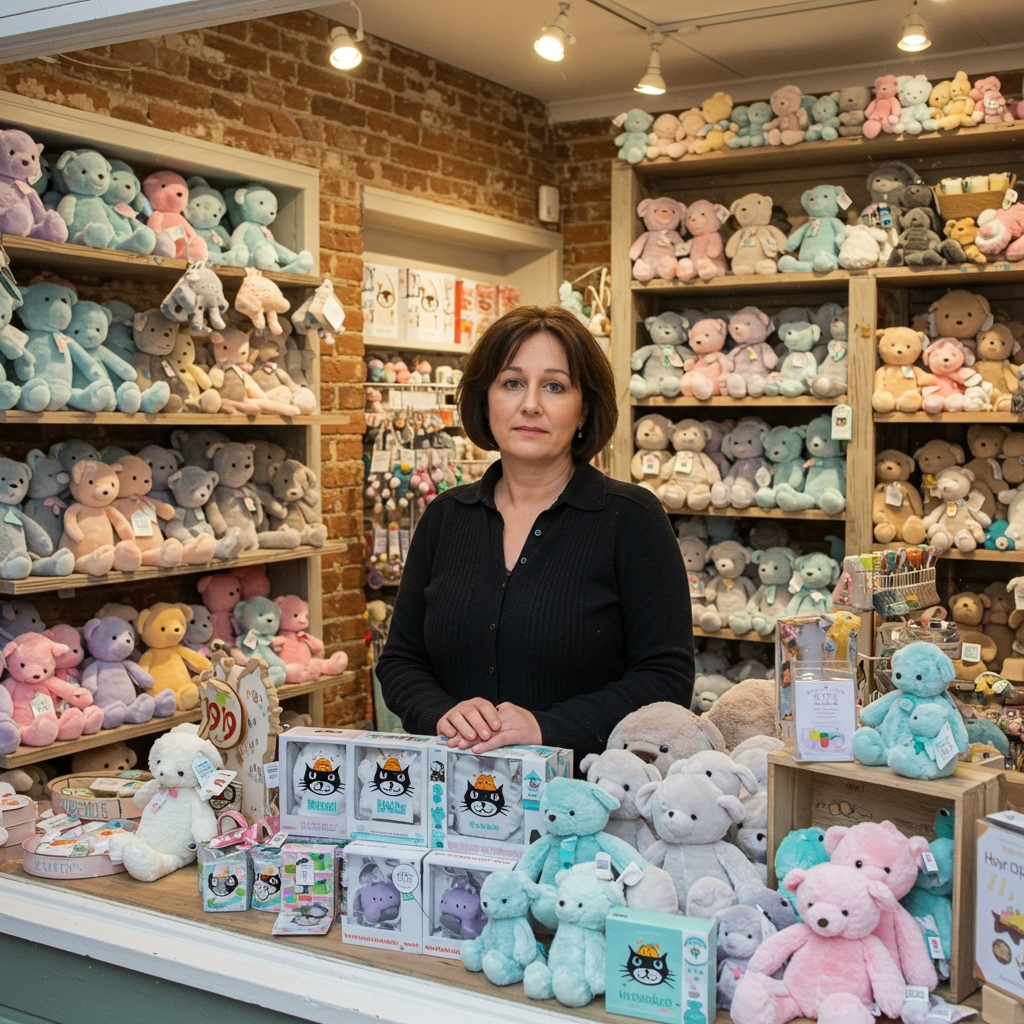For many independent retailers across the UK, Jellycat plush toys have been a cherished, reliable fixture for decades. These soft, whimsical companions often occupied prime shelf space, driving consistent sales and becoming a significant revenue stream for small businesses. However, a recent decision by the popular British soft toy company has left around 100 of these long-standing partners feeling shocked and financially vulnerable.
In mid-June, without prior in-depth discussion or apparent specific cause, affected shop owners received identical, abrupt emails. These messages from Jellycat delivered stark news: supply relationships were being terminated immediately. This sudden cutoff has created confusion and disappointment among retailers who helped build the brand’s presence locally over many years.
The Unexpected Email and Its Impact
The communication, dated June 18th and addressed generically to “Jellycat stockist” rather than by name, stated the decision was final and non-negotiable. The only explanation offered was that the move was part of a “brand elevation strategy.” This lack of a detailed reason left many owners bewildered, questioning if their stores were somehow insufficient or failed to meet uncommunicated criteria.
For shops like Rumours, a gift store in Whitby that had stocked Jellycat for over two decades, the news was devastating. Manager Joe Orrell described being “absolutely gutted,” noting that Jellycat sales represented a substantial part of their income. Similarly, Alison McCabe, owner of Puddleducks near Oldham, which had sold the toys for nearly 20 years, experienced booming sales in the past year, sometimes selling hundreds weekly, only to be suddenly cut off. The termination felt particularly harsh after what she described as months facing difficulty securing adequate stock from the supplier.
Financial Strain on Small Businesses
Ending supply to 100 stores in the UK, as confirmed by Jellycat, means a considerable financial blow for these independent retailers. Businesses that relied on Jellycat for a significant portion of their turnover are now scrambling to replace that income. The sudden nature of the decision offered no time to prepare or transition, magnifying the negative impact. This has led to feelings of being undervalued by a brand they passionately supported from its earlier days.
The affected owners expressed a sense of hurt and surprise. They had invested shelf space, marketing effort, and built customer loyalty around the Jellycat brand. To have that relationship severed so abruptly, especially with little explanation beyond a strategic shift, felt like a betrayal of their long-term partnership.
Jellycat’s Perspective and Strategy
In response to inquiries, Jellycat issued a statement explaining that they “select our stockists carefully” to ensure customers have a “joyful experience” and that their products are widely available. They confirmed the review affected approximately 100 stores but noted they still supply around 1,200 independent retailers. The company added that presentation standards are one factor considered when evaluating store partnerships and mentioned visiting all independent stores in person as part of this process. The brand elevation strategy was cited as the overarching reason for the relationship review.
Beyond the stores facing complete cutoff, another group of independent stockists received notification that while their accounts remained “unaffected” in terms of supply access (stock permitting), they would no longer be classified as “official stockists.” This meant losing the right to display the official window sticker, a symbol many valued. Erica Stahl, owner of Pippin in Edinburgh, was reportedly left “speechless” by this news and ultimately chose to close her account entirely, feeling the change in status was unacceptable.
Focus on Presentation and Brand Experience
Jellycat’s statement highlighted the importance of how their products are presented. This aligns with the brand’s recent moves towards creating more immersive retail experiences. This includes elaborate displays in large department stores, like a themed “fish and chip van” at Selfridges in London, and opening branded locations such as a “diner” in New York and a “patisserie” in Paris. These efforts aim to enhance the theatricality and appeal of the brand, often featuring products arranged in carefully curated, gentle colour palettes, designed to be shared widely on social media.
While Jellycat maintains that presentation is just one factor, and they visit stores to assess suitability, the emphasis on brand experience appears to be a key driver in their strategic decisions regarding stockists.
The Popularity Boom and Supply Challenges
The relationship review comes at a time when Jellycat’s popularity has exploded. While always a stable seller for traditional gifts like newborn presents or children’s pocket money purchases, the brand saw an immense surge in demand over the past year. This boom is largely attributed to the toys becoming viral sensations on social media platforms like TikTok and Instagram. Collectors and enthusiasts showcased vast collections, creating significant online buzz. The trend also spread among “kidults,” adults who enjoy toys and nostalgic items, further boosting demand.
However, this rise in popularity coincided with increasing stock availability issues for many independent shops. Retailers reported receiving stock only in “dribs and drabs” over the last 12 months, forcing them to reduce display sizes. Joe Orrell noted customers were increasingly disappointed by limited selections. Andrew Kenyon, co-owner of a department store near Wigan, described waiting months for orders or receiving incomplete shipments, making it impossible to advise customers accurately on stock arrival times.
Independent Stores Feeling Deprioritized
Many independent owners felt that Jellycat was prioritizing larger retailers or its own direct-to-consumer channels. Some alleged they were only offered “random mismatched odds and ends” that bigger stores didn’t want, struggling to order best-selling lines. Charlotte Stray of Keydell Nurseries echoed this sentiment, stating independent stores felt “pushed to the back of the queue” for stock. Even before being cut off, the inconsistency of supply had been a source of frustration for many retailers.
Jellycat countered these claims by stating they had increased supply to both independent and national retailers at the “overall same rate.” They acknowledged that meeting demand and keeping all partners well-stocked remains a challenge and stated they are working behind the scenes to improve allocation and delivery processes. The company also reiterated that independent stores would remain “as important in our future as they’ve been in our past” and mentioned planning new initiatives to support their remaining independent partners.
Customer and Community Reaction
The decision to cut off independent stockists has generated significant negative sentiment, particularly online. Customers who are loyal to their local independent shops and have collected Jellycat toys for years expressed disappointment and frustration with the brand’s actions. Social media posts by affected retailers, like one by Erica Stahl about losing official stockist status, have gone viral, accumulating tens of thousands of likes and comments criticising Jellycat’s conduct.
Bex Christensen, a long-time Jellycat collector who estimates her family owns around 100 toys, spoke for many customers when she described the situation as leaving a “really sour taste” in her mouth. She highlighted that she had always purchased from independent stores and felt Jellycat “grew off independent businesses.” This public backlash indicates that the brand’s move, while potentially strategic, risks alienating a segment of its dedicated customer base who value the connection to local retailers.
Moving Forward
For the independent shops affected, the immediate focus is on adapting. Many are planning to replace the lost Jellycat lines with alternative plush toy brands. While acknowledging the significant impact, some owners remain optimistic about their future. Joe Orrell of Rumours, whose business predates Jellycat, expressed confidence in their ability to survive and thrive by diversifying their offerings and relying on their established customer relationships.
The situation underscores the delicate balance between a brand’s growth ambitions and its foundational relationships with independent retailers. While Jellycat pursues its brand elevation strategy, the experience of the cut-off stores highlights the human and financial cost when long-standing partnerships are abruptly ended.
Frequently Asked Questions
Why did Jellycat stop supplying some independent shops?
Jellycat stated that they reviewed their relationships with approximately 100 UK independent stores as part of a “brand elevation strategy.” While they did not provide specific reasons to individual stores in the termination emails sent around June 18th, their public statement mentioned carefully selecting stockists to ensure a positive customer experience and citing presentation as one factor considered during their review process.
What should customers do if their local shop lost Jellycat stock?
Customers loyal to independent shops that were cut off will likely find these stores stocking alternative plush toy brands. To support these businesses and continue finding high-quality soft toys, customers can visit their local independent gift shops or children’s stores and inquire about the new brands they are carrying. Exploring these alternatives can help retailers recover from the loss of Jellycat sales.
How has Jellycat’s recent popularity affected stock for retailers?
Jellycat’s immense popularity surge over the past year, driven significantly by social media trends on TikTok and Instagram, led to increased demand that many independent retailers found difficult to meet. Shop owners reported experiencing stock availability issues for roughly the last 12 months, receiving orders in inconsistent quantities (“dribs and drabs”) and facing delays, sometimes for months, even before any supply relationships were terminated.




